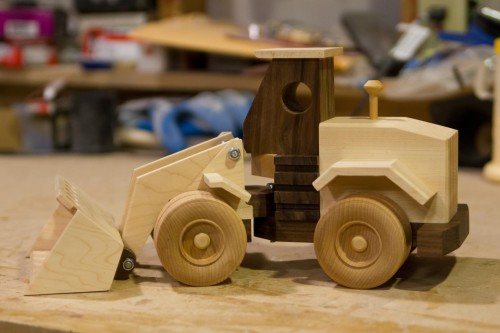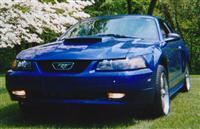 In all likelihood, the Seahawks have pretty much knocked themselves out of the playoff hunt with this latest loss. On any Sunday in the NFL, you have a hard enough time beating your opponent, but if you’re also beating yourself then you’re pretty screwed. The Seahawks destroyed themselves with penalties. They put a lot of points on the board but the defense gets credit for 14 of those. Sure there were a couple close calls and plays where the game could have gone the other way, but that’s the difference this year: they’re always playing from behind and hoping to get lucky.
In all likelihood, the Seahawks have pretty much knocked themselves out of the playoff hunt with this latest loss. On any Sunday in the NFL, you have a hard enough time beating your opponent, but if you’re also beating yourself then you’re pretty screwed. The Seahawks destroyed themselves with penalties. They put a lot of points on the board but the defense gets credit for 14 of those. Sure there were a couple close calls and plays where the game could have gone the other way, but that’s the difference this year: they’re always playing from behind and hoping to get lucky.
In our league, Logan reinforced my loss from last week and got me thinking about the possibility of ending the season with a seven game losing streak. To top it off, I lost Julian Edelmen to injury. Earlier this season I also lost Arian Foster and Jamaal Charles. It’s hard to survive losing three superstars like that so we’ll see where the season leaves me.
Dad and Logan both won their games so they are just one game behind me with 4 games left until we start the playoffs. Austin continued his push from last week and is looking very strong. His optimal roster was over 180 this week. Speaking of optimal rosters, Andy almost started his optimal roster, but instead of starting Peyton Manning, he should have started Philip Rivers… who was on a bye. Peyton had -6.6.
Austin has now claimed the top spot in our power rankings and Jim climbs into 4th place.
1. Austin (+1)
2. Ben (-1)
3. Logan
4. Jim (+2)
Now on to the weekly awards.
| This Week | Season | All-Time | |
| Highest Team Score | Austin had 152.68 | Tim 200.51 (Week 3) | Tim 200.51 (2013) |
| Lowest Team Score | Andy had 62.50 | Was Austin had 64.70 (Week 5) | Luke 47.01 (2011) |
| Biggest Blowout | Austin beat Tim by 48.43 | Ben beat Dad by 111.43 (Week 8) | Luke beat Andy by 113.02 (2010) |
| Closest Win | Dad beat Luke by 1.81 | Ben beat Andy by 2.46 (Week 7) | Jim beat Ben by 0.12 (2012) |
| Highest Scoring Player | Kirk Cousins had 36.96 for Logan | Drew Brees had 60.54 on Tim’s bench (Week 8) | Drew Brees had 60.54 on Tim’s bench (2015) |
| Longest Active Winning Streak | Austin has a 3 game winning streak | Ben had an 8 game winning streak (Week 8) | Micah (2011) and Ben (2015) had an 8 game winning streak |
| Longest Active Losing Streak | Andy has a 4 game losing streak. | Luke, Austin and Tim had 5 game losing streaks. (Weeks 5, 7 and 8) | Kyle had a 14 game losing streak (2011) |

 One of the last (haha) tools that I had on my radar was a thickness planer. If you have no idea what that is, it’s basically a machine that will make two faces of the board parallel with each other and will also thin a board down. In the past, Tim was nice enough to loan me his for a month or two while I worked on Tyla’s jewelry box, but I didn’t want to keep borrowing his every time I needed one.
One of the last (haha) tools that I had on my radar was a thickness planer. If you have no idea what that is, it’s basically a machine that will make two faces of the board parallel with each other and will also thin a board down. In the past, Tim was nice enough to loan me his for a month or two while I worked on Tyla’s jewelry box, but I didn’t want to keep borrowing his every time I needed one.




 I was happily enjoying all the Parks and Recreation episodes (great show!) on Amazon Prime Instant Video when suddenly that stopped being available as part of Prime. I was about halfway through the fifth of seven seasons. What to do?
I was happily enjoying all the Parks and Recreation episodes (great show!) on Amazon Prime Instant Video when suddenly that stopped being available as part of Prime. I was about halfway through the fifth of seven seasons. What to do?
 Obviously I’m loving woodworking right now. It’s a very relaxing and satisfying hobby, and it’s a great one for me right now because I can easily do it in the garage when I have a few spare minutes. Any new hobby can seem intimidating at first, but woodworking doesn’t require a huge investment or training course to get started.
Obviously I’m loving woodworking right now. It’s a very relaxing and satisfying hobby, and it’s a great one for me right now because I can easily do it in the garage when I have a few spare minutes. Any new hobby can seem intimidating at first, but woodworking doesn’t require a huge investment or training course to get started. Last week’s post about the
Last week’s post about the
Broken Window Theory
I hate cleaning, but even more than that, I hate looking at a mess and knowing that I have to “waste” my time and clean it. So my basic approach is to ABC: Always Be Cleaning. (Every self-help article like this needs a cheesy acronym, right?) For example, when I finish making dinner, I don’t leave the dishes in the sink to greet me the following morning, I take 5 minutes and clean them up. Doing little bits of cleaning here and there feels a lot less painful than ruining two hours of my Saturday because the kitchen turned into a nightmare.
Coupled with that, I also force myself to clean up the area before starting any project. Even if I clean up at the end of a task, the area slowly gets messy again. This is especially true out in the garage. So before I start that next big project, I pick up all my tools, clean off my bench, and organize the piles of wood. Then I’m excited to work in that nice clean area instead of tripping over stuff on the floor and never having room on the bench.
My approach can be neatly summed up by the Broken Window Theory. If you read that linked Wikipedia article, you’ll see the theory summed up like this:
It’s pretty easy to tell when an area is clean. I feel an emotional response to setting that first piece of junk in the nice clean area. But then I get used to seeing it there and it doesn’t bother me so much. In fact, it gets easier and easier to just throw more junk in that area because hey, I have to clean it out anyway, right? Pretty soon it’s a huge mess and now I have to do one of those big huge cleanouts and my quality of life is negatively impacted because I’m annoyed by the thought of that big cleaning event coming up.
It’s surprising how often this theory applies. For example, we talk about it regularly at work when someone proposes a less than beautiful piece of code. Just take the time to fix it now because your hack will open the floodgates for more hacks until we’re left with a nightmare that we don’t have time to re-architect. If you want to get a little geekier about it, you might propose that messes grow exponentially.
If you’ve already got a system that works for you, then stick with it! But if you need a little more encouragement, remember the broken window theory.